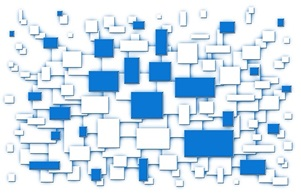ATD Blog
Science of Learning 101: Why You Need to Know What Your Learners Know
Fri May 15 2015

Jan starts her business writing course by asking participants to write a persuasive email that has the goal of getting its reader to agree to attend a meeting. Most participants write an email that is too long, and 84.3 percent of the emails have grammatical errors. These results are exactly what Jan expected.
Jan then shares with the group a variety of business emails, and asks them to choose two that they feel are most persuasive. Jan asks, “Why are they good?”
“They both quickly explain exactly why I would want to be there,” Katarina, answers. Percy adds, “Mine was far too long and twisting. No one would read it all or reply.” He quickly sees how this course can help him.
People Aren’t Blank Sheets
We often build instruction as if people are blank sheets of notebook paper on which we are writing. This is clearly a mistake (that causes problems) on numerous fronts.
Pre-existing knowledge is the foundation to build additional knowledge. Jan‘s exercise helps her participants discover pre-existing knowledge in a fun way. It is our job to help learners connect what they know to what they are learning. It is these connections that help learning make sense.
In essence, your courses need to help learners perform three critical actions:
activate directly related, accurate knowledge
fill in critical, missing knowledge
fix misconceptions.
For example, in order to teach others to balance a checkbook, we can:
Help people “activate existing, related knowledge” by showing them how balancing a checkbook is very much like how they managed the cash they earned babysitting as a teenager to pay all their bills and have enough saved to go out with friends. Let’s say you ask, “How can we do this?” Their answers relate to the process of inputs to and outflows from a checking account.
Make sure that there isn’t any missing, critical knowledge by giving them a calculator to do basic addition and subtraction. If there is missing information, we would need to fill in gaps. Ideally, we would have determined this information in advance to know what information needs to be included in the course.
Fix misconceptions by letting them know that they don’t need to know advanced math to have a checking account. When such misconceptions exist, they can really interfere with learning.
Why Prior Knowledge Is SO Important
Research shows that when we are able to connect what we’re learning to accurate prior knowledge, we learn more and retain that knowledge more easily. That’s because all learning is a refinement of prior knowledge.
The implication is that we need to consider prior knowledge every time we deliver instruction. Doing so makes it much easier for people to learn. For example, if percentages didn’t make sense when you learned it years ago, a new lesson on interest rates will fail to make sense or “stick.”
In addition, learners also must also be able to access prior knowledge. Sometimes participants have already learned something, but they can’t easily remember it. They may be overwhelmed or afraid. (See Dave Ferguson’s blog post on avoiding too much cognitive load and my blog post on when to train to automaticity for related information.)
What If Learners Don’t Know Enough? (Inadequate Knowledge)
Consider the following scenario: I know that the best ratio for coffee to water in a French press is one part of very course ground coffee to about 14 or 15 parts very hot water (almost boiling). I also know that the brew time is generally about 6-7 minutes. Do I know enough to make good coffee in my French press? No.
This is what we call necessary but inadequate declarative knowledge (the basic facts or the “know what”). In this example, I know “what” but I still don’t know “how.” “Know how” is called procedural knowledge. The declarative knowledge I have is accurate, but I still can’t do the task.
Likewise there are times when someone can do the task (they have the procedural knowledge), but they don’t have the understanding of what they are doing. For instance, have you ever been on the phone troubleshooting a technical problem with someone who is using a script? When you ask them a question, they can’t answer it unless it is in the script.
So when L&D professionals say, “The only thing we care about is performance,” that isn’t exactly right either. People need to be able to perform (know how) with understanding (know what) so they have the nimbleness to change their performance as needed.
What If What Learners Know Is Wrong? (Inaccurate Knowledge)
Sometimes what people know is simply wrong. For example, there is a popular but erroneous misconception called the “Equal Transit Time Theory” that explains how airplanes fly (aerodynamic lift). Actually, planes fly because the wings force air downward, which forces the wing and the plane upward.
Misconceptions damage further learning and can lead some learners to be resistant to correction. Scientists are still debating how wings work and planes fly! Likewise, L&D folks are still debating learning styles and other learning myths! See Dr. Will Thalheimer’s blog post debunking such myths as “people remember 10 percent of what they read and 20 percent of what they hear.”
Bottom line: We can’t assume that people actually know, what they say they know. We also have to uncover misconceptions and help people replace them with accurate information, especially when misconceptions make further learning difficult.
Resources
[National Center on Accessing the General Curriculum, _Background Knowledge
_](http://aim.cast.org/sites/aim.cast.org/files/ncac\_BKNov3.pdf)
[Strategies for Activating Prior Knowledge
](http://www.classhelp.info/Biology/Strategies%20for%20Activating%20Prior%20Knowledge.pdf)
How to Assess Students’ Prior Knowledge
